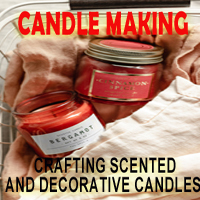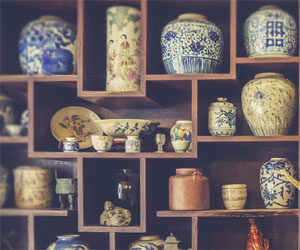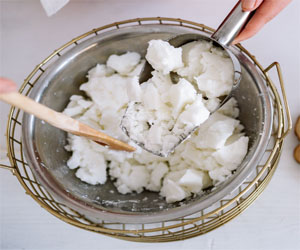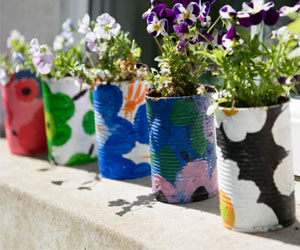


A Global Celebration Of Brews

Beer culture is as diverse as the people who brew, serve, and savor it. This multifaceted and ever-evolving culture encompasses a wide range of traditions, rituals, and preferences, making beer a reflection of the rich tapestry of human experiences. From the ancient brewing practices of the East to the craft beer revolution in the West, the world of beer is a celebration of diversity and a testament to its global appeal.
Beer Across Borders: The world of beer transcends international boundaries. Each country and region has its own unique brewing traditions and flavor profiles that showcase the influence of geography, culture, and history. In Germany, you'll find an emphasis on precision and purity, while Belgium boasts a rich heritage of Trappist brewing. The UK has a long history of cask ales, and the United States is known for its craft beer innovation. These diverse beer cultures not only yield an array of flavors but also offer insights into the values and priorities of each society.
Beer And Celebration: Beer has long been an integral part of celebrations and rituals across the world. In Germany, Oktoberfest is a cultural phenomenon that draws millions of visitors from around the globe. In Ireland, St. Patrick's Day is synonymous with toasts of Guinness and other Irish stouts. In the Czech Republic, beer is often enjoyed during traditional festivals and holidays. Such celebrations highlight the cultural significance of beer and its role in fostering community and camaraderie.
Beer And Food Pairing: Beer culture diversity extends beyond the beverage itself to the world of gastronomy. Beer and food pairing is a practice celebrated in many cultures. The hearty brews of Germany are perfect companions to sausages and pretzels, while the delicate flavors of sushi and sashimi in Japan are enhanced by crisp lagers. In the United States, craft beer enthusiasts have elevated beer and food pairings to an art form, experimenting with intricate combinations that rival wine pairings in complexity and creativity.
Traditional Brewing Techniques: Many regions have preserved their traditional brewing techniques, passed down through generations. For example, the indigenous beer of Africa, known as "sorghum beer" or "umqombothi," is brewed using ancestral methods. Similarly, in South Korea, "makgeolli" continues to be made using time-honored techniques, showcasing the beauty of ancient brewing traditions.
The Craft Beer Revolution: The craft beer movement, particularly prominent in the United States, has sparked a wave of innovation that celebrates diversity in beer. Craft brewers embrace unconventional ingredients, styles, and experimental techniques. This innovation has extended to diverse beer styles like sours, barrel-aged beers, and hybrid concoctions. The movement has led to a global renaissance in brewing, inspiring countless craft breweries worldwide to push the boundaries of beer culture.
Embracing Inclusivity: Beer culture is also becoming increasingly inclusive. Efforts are being made to diversify the industry by promoting underrepresented groups, fostering a welcoming environment, and encouraging diverse voices to participate in brewing, beer journalism, and related fields.
The diversity of beer culture is a testament to the universality of this cherished beverage. It reflects our collective history, values, and the universal desire to savor life's simple pleasures. Whether you're sharing a lager in a German beer garden, enjoying a sake in Japan, or toasting with a craft brew in a trendy American taproom, beer culture diversity is a testament to our shared humanity. So, raise a glass to the kaleidoscope of beer cultures that brings us together and enriches our lives with its incredible array of flavors and traditions.
Unearthing Value In Vintage And Thrifted Finds
 Unique Finds: Secondhand treasures are unique and distinct from mass-produced, contemporary goods. Vintage items often feature designs, craftsmanship, and aesthetics that are no longer readily available in modern markets.
Unique Finds: Secondhand treasures are unique and distinct from mass-produced, contemporary goods. Vintage items often feature designs, craftsmanship, and aesthetics that are no longer readily available in modern markets.
Quality Craftsmanship: Many secondhand items were created during eras when quality and durability were highly valued. These pieces often exhibit superior craftsmanship, making them appealing to those who appreciate well-made goods.
Environmental Consciousness: Secondhand treasures align with eco-conscious lifestyles. By buying used items, consumers reduce the demand for new manufacturing and help minimize waste and carbon emissions.
Historical And Cultural Significance: Secondhand treasures carry history and cultural significance. Each item has its own story and represents a slice of the past, offering a tangible connection to bygone eras.
What Can Be Found
The variety of secondhand treasures is astounding. These items span numerous categories, including:
Clothing: Vintage clothing, including dresses, suits, and accessories, allows wearers to showcase unique and timeless style.
Furniture: Secondhand furniture pieces, such as mid-century modern chairs, antique tables, and vintage cabinets, add character and functionality to homes.
Collectibles: Vintage toys, records, antique books, and rare coins are sought-after collectibles that capture nostalgia and historical value.
Home Decor: Secondhand home decor items, like vintage artwork, retro kitchenware, and decorative glassware, infuse charm and personality into living spaces.
Healing Stitches For Mind And Soul
 Sense Of Accomplishment: Completing a cross-stitch project provides a tangible sense of accomplishment. Watching a piece of artwork slowly take shape, stitch by stitch, instills a feeling of pride and boosts self-esteem.
Sense Of Accomplishment: Completing a cross-stitch project provides a tangible sense of accomplishment. Watching a piece of artwork slowly take shape, stitch by stitch, instills a feeling of pride and boosts self-esteem.
Emotional Expression: Cross-stitching can be a form of emotional expression. By selecting colors, patterns, and designs, individuals can channel their emotions into their creations, helping them process and cope with challenging feelings.
Distraction From Negative Thoughts: The process of cross-stitching serves as a constructive and enjoyable distraction from negative or intrusive thoughts. It can help redirect mental energy away from worries and concerns.
Connection And Community: Many individuals find solace in the cross-stitching community. Sharing projects, tips, and experiences with others can provide a sense of belonging and support, reducing feelings of isolation.
To engage in cross-stitching therapy and reap its mental health benefits, consider the following steps:
Select A Project: Begin by choosing a cross-stitch project that matches your skill level and interests. Start with simpler patterns if you're new to cross-stitching.
Gather Materials: Acquire the necessary materials, including embroidery fabric, cross-stitch thread, embroidery needles, and an embroidery hoop. High-quality materials can enhance the crafting experience.
Learn The Basics: Familiarize yourself with cross-stitching techniques and patterns. Many resources, including books, online tutorials, and classes, are available to guide beginners.
Create A Relaxing Environment: Find a quiet and comfortable space to cross-stitch. Set up your materials in an environment that promotes relaxation and mindfulness.
A Step-By-Step Guide
 Gathering Materials
Gathering Materials
The first step in the candle making process is to gather all the necessary materials and tools. This typically includes wax (common options are paraffin, soy, or beeswax), a double boiler or microwave for melting the wax, a thermometer, wicks, fragrance oils, and candle dyes if you want to add color. It's essential to ensure that your workspace is clean and well-ventilated for safety.
Melting The Wax
Once you have all your materials ready, it's time to melt the wax. This can be done by using a double boiler or a microwave. If using a double boiler, place the wax in the top pot and heat it gently until it becomes a liquid. If using a microwave, cut the wax into smaller pieces, place it in a microwave-safe container, and heat it in short bursts until it's fully melted. It's crucial to monitor the temperature of the wax using a thermometer to prevent overheating, which can be dangerous.
Adding Fragrance And Color
If you want to create scented and colored candles, this is the stage to do so. Add fragrance oils to the melted wax and stir thoroughly to ensure an even distribution of the scent. Similarly, add candle dye to achieve your desired color. The amount of fragrance and dye you use will depend on the type and brand, so consult the instructions provided with your supplies.
Preparing The Wick
While the wax is still liquid, it's time to prepare the wick. Cut the wick to the desired length, making sure it's a couple of inches taller than your chosen container or mold. Secure the wick in the center of the container or mold using a wick holder or adhesive.
Industry Insights
 Terroir's Influence: Terroir, a French term referring to the unique combination of soil, climate, and geography in a particular region, plays a pivotal role in winemaking. Each wine region has its distinct terroir, shaping the character of the grapes and, consequently, the wine. The influence of terroir allows for a profound connection between the land and the wine, and it's an essential concept for understanding wine industry nuances.
Terroir's Influence: Terroir, a French term referring to the unique combination of soil, climate, and geography in a particular region, plays a pivotal role in winemaking. Each wine region has its distinct terroir, shaping the character of the grapes and, consequently, the wine. The influence of terroir allows for a profound connection between the land and the wine, and it's an essential concept for understanding wine industry nuances.
Sustainability And Organic Practices: In recent years, there has been a growing emphasis on sustainable and organic winemaking practices. Consumers are increasingly conscious of the environmental impact of their choices, and wineries are responding by adopting eco-friendly approaches. This shift towards sustainability reflects a broader commitment to preserving the natural balance and ensuring the longevity of wine production.
Wine Tourism: Wine tourism has blossomed into a thriving sector of the wine industry. People are not only enjoying wine but also seeking experiences that bring them closer to the heart of winemaking. Vineyard tours, wine tastings, and winery visits have become integral components of the industry, allowing enthusiasts to connect with the process and the people behind the wine.
Emerging Wine Regions: While established wine regions like Bordeaux, Napa Valley, and Tuscany continue to thrive, there is a growing interest in wines from emerging regions. Countries like Chile, Argentina, New Zealand, and South Africa are gaining prominence in the global wine market. Their unique offerings and affordable price points have made them appealing to a broader audience.
Wine Technology: Advancements in technology have significantly impacted the wine industry. From precision viticulture using drones to monitor vineyards to the use of artificial intelligence for predicting optimal harvest times, technology is changing the way wine is produced and marketed. Wineries are also leveraging social media and e-commerce to reach a wider audience and engage with consumers directly.
Creating Beauty From Discards
 Environmental Benefits
Environmental Benefits
One of the most compelling aspects of repurposed materials is their positive environmental impact. By upcycling, we reduce the need for new resources, which saves energy and conserves raw materials. This practice significantly lessens the burden on landfills and cuts down on pollution generated during the production of new items.
Resourcefulness And Creativity
Repurposing materials encourages resourcefulness and sparks creativity. When working with limited resources, artists often find innovative solutions to turn discarded items into functional and beautiful pieces. This process can lead to fresh ideas and designs that stand out for their uniqueness.
Artistic Expression And Uniqueness
Repurposed materials are celebrated for their artistic expression and uniqueness. Each piece tells a story, preserving the history and character of the original materials. Whether it's a coffee table made from an old door or a lamp fashioned from discarded industrial equipment, these creations are one-of-a-kind.
A Sustainable Lifestyle
Repurposed materials fit perfectly within the framework of a sustainable lifestyle. By incorporating upcycled items into your home or daily life, you contribute to a more eco-friendly world. Not only do you reduce your carbon footprint, but you also promote the principles of recycling, reusing, and repurposing.
Inspiration And Community
Repurposed materials often inspire like-minded individuals who appreciate creativity and sustainability. There are communities and online platforms where enthusiasts share their projects, tips, and ideas. This sense of community fosters inspiration and provides valuable insights and support.